When it comes to the classic patterns of menswear, those based on the simple line–that is to say, stripes–remain just as popular today as they have been for centuries. In this primer, we’ll discuss the different kinds of striped patterns in tailored clothes and show you how to “fall in line” with wearing them well.

Because men typically want to project a serious, businesslike demeanor when wearing tailored clothes, the two most popular pattern styles are not overly ornate, but are based on the simple geometry of the line: one of these styles being checks (which was the topic of a previous article) and the other stripes. These two basic patterns can create greater interest than simply wearing solids while still looking subdued and formal, though there is always the opportunity (or risk!) of making them quite bold.
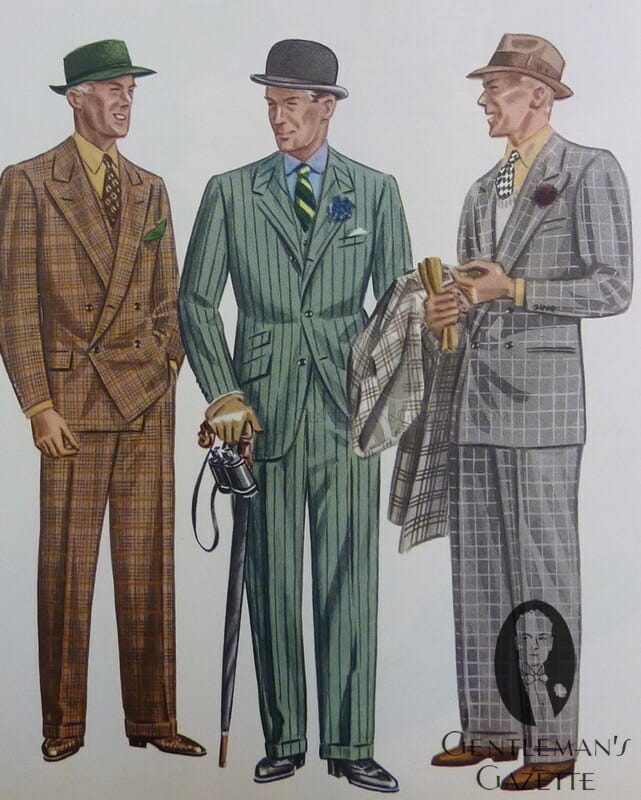
What are Stripes?
Stripes are a series of parallel lines that do not cross each other. They are found in a variety of orientations in menswear; typically, suits and shirts feature vertical stripes, though horizontally striped garments do exist, as well. Additionally, neckwear and accessories (such as pocket squares or hat bands) may feature stripes in various orientations. Because of the lack of interaction between lines, striped patterns are simpler than checks, which also means they tend to be more reserved, and therefore more formal. Combinations of colors are often used to create differently named patterns, which we will discuss below.
Stripes 101: Broad Terminology
Before we dive headfirst into the pantheon of specific stripe styles that exist, it’s important that we go over some terminology. The following terms can be thought of as broad categories that apply to multiple striping patterns; you’ll find definitions for each of the examples listed further down in the article.
- Self-Stripes
A “self-stripe” is integral to the weave, rather than printed or otherwise added later. Seersucker is an example of a self-striped fabric.
- Warp Stripes
Vertical stripes are created by changing the color or increasing the number of warp (vertical) yarns in a garment. Most menswear stripes – including pinstripes, chalk stripes, and candy stripes, among others – are examples.
- Weft Stripes
Horizontal stripes are created by changing the weft (horizontal) yarns in a garment. These are less common than warp stripes.
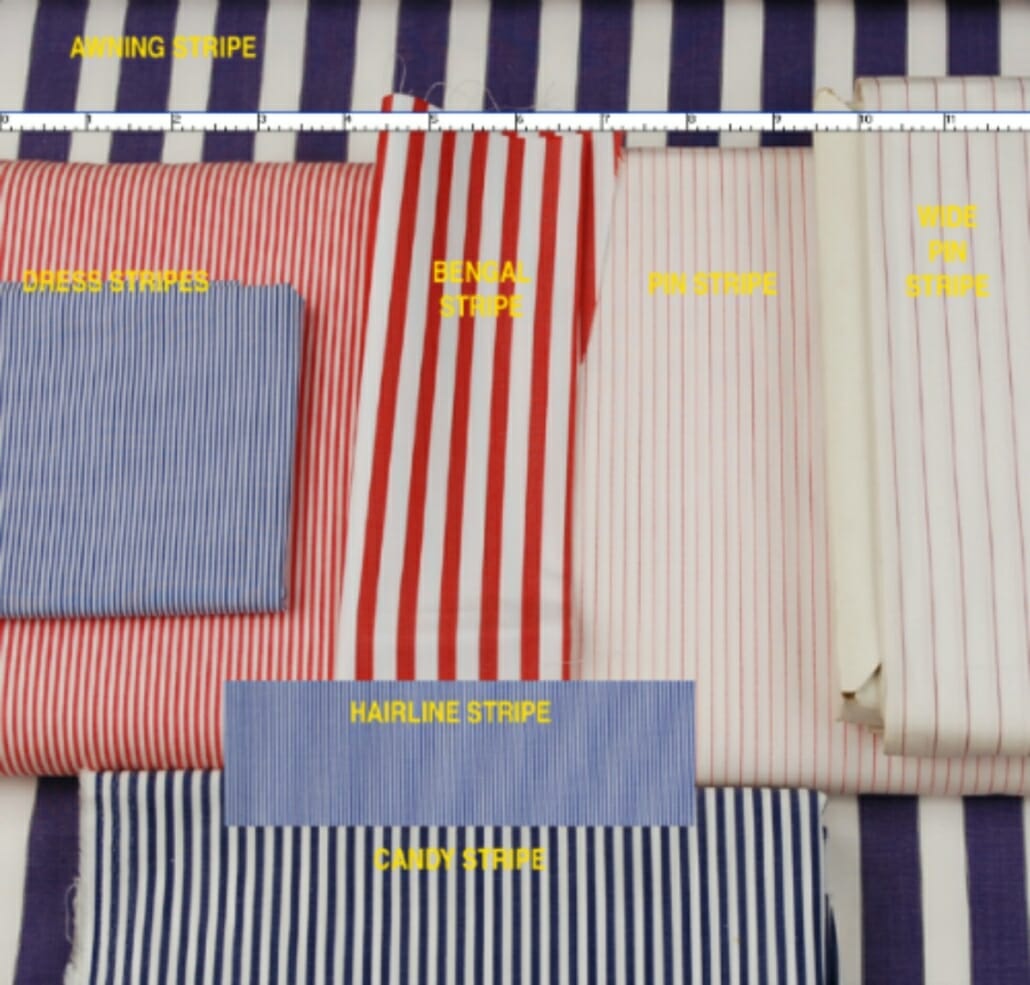
- Balanced Stripes
Symmetrically patterned, indicating that the background and stripe are equal in width. Usually refers to shirt fabrics. Bengal stripes are an example.
- Unbalanced Stripes
Asymmetrically patterned, indicating that the width of the stripe is either narrower or wider than that of the background and/or that the stripes are not spaced evenly. Pinstripes are an example.
- Fancy Stripes
Industry jargon for a weave or pattern that does not match any other specific definition; it may still generally be a balanced stripe, in some cases.
- Jermyn Stripes (and other “street stripes”)
Rather than a specific type of stripe, this is a broad reference to the style of bright, boldly striped shirt fabrics favored by custom shirtmakers located on or around Jermyn Street in London. Therefore, Jermyn Stripes may describe Bengal stripes, candy stripes, or any other traditional stripe style. Some patterns may also make reference to other well known retail streets in London, such as Bond Street.
Note: The two terms on the above list that are mutually exclusive are “warp stripe” and “weft stripe.” Phrased another way: all self-stripes are either warp or weft stripes, but not both. If stripes were introduced to both the warp and weft yarns of a garment, a check pattern would then be created.
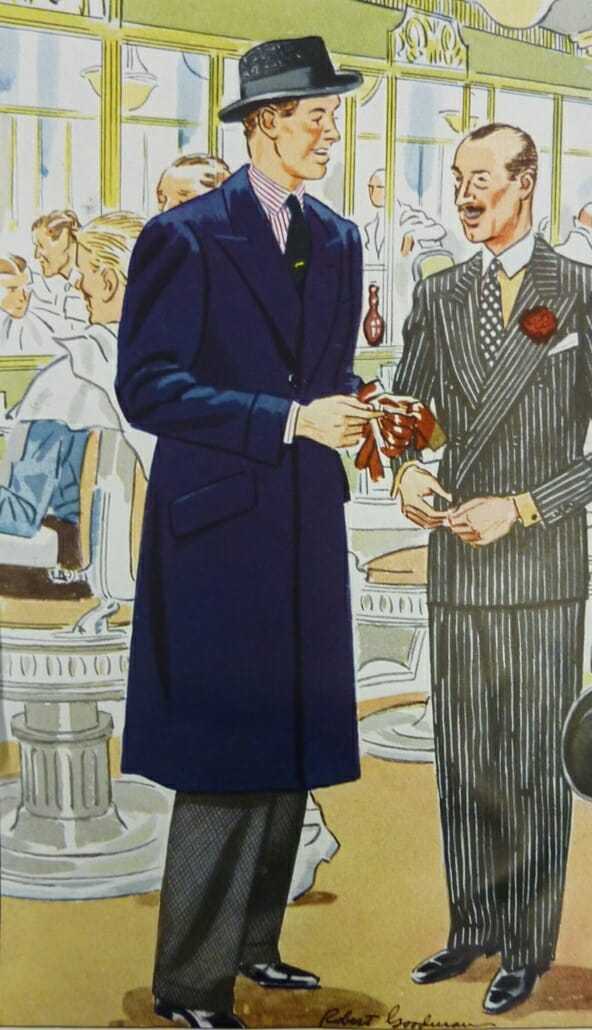
Types of Stripes: Balanced
Simple Two-Tone Stripes (Narrowest to Widest)
- Bengal Stripes
A two-color vertical pattern, with the background and stripe being of equal width. A Bengal stripe is broader than a chalk stripe and narrower than a candy stripe. Commonly done in white and one other color. An example of a balanced stripe. The fabric was originally shipped to world markets from Bengal (Calcutta), India. The term is used to describe shirt fabrics, but never suit fabrics.
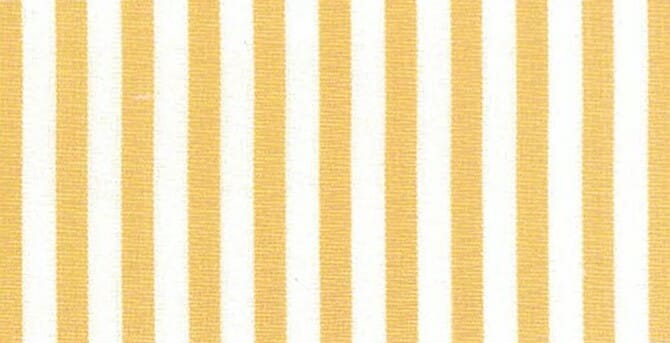
- Candy Stripes
Equal-width stripes of a color and white on fabrics used for shirts and sportswear. A candy stripe is broader than a Bengal stripe, is usually done in white and one other color, and reminds many people of a candy cane.
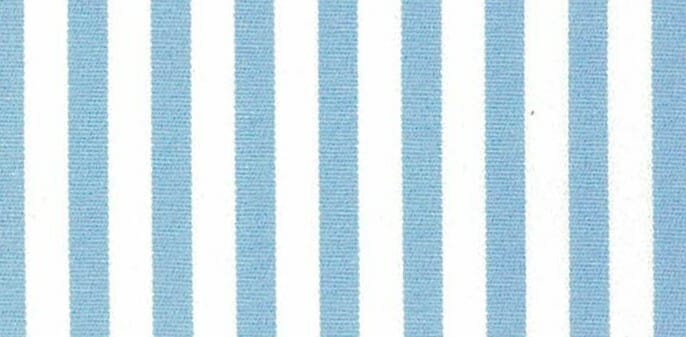
- Sandwich stripes
A nickname for a style of bold vertical stripes, usually about 0.5″ wide. Used to describe sports jackets, pants, and outerwear, but never shirts.
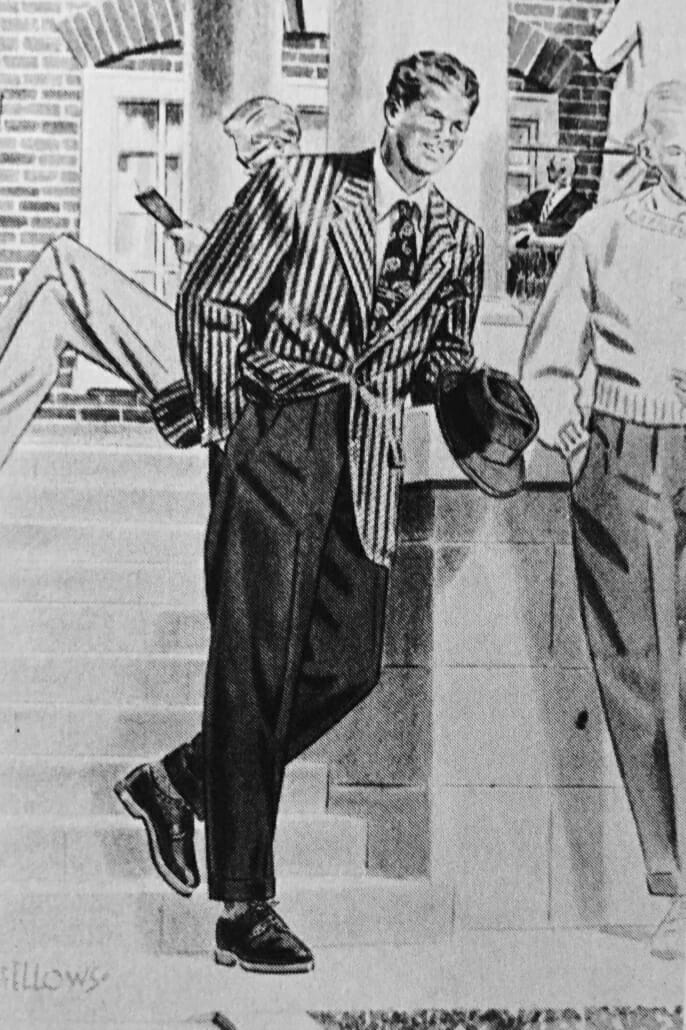
- Regency Stripes
Vertical Stripes of equal width, most often associated in a historical context with Regency England. Like Bengal stripes, Regency stripes are often white alternating with another color, run vertically rather than horizontally, and can usually be classified as a balanced stripe. Unlike contemporary shirt stripes, however, Regency stripes are often rather oversized and can be as thick as an inch (or more).
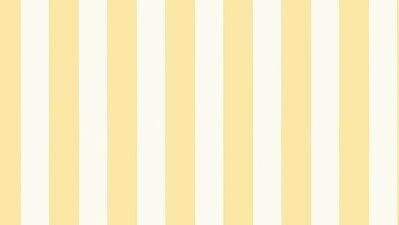
- Awning Stripes or Cabana Stripes
Bold, vertical, balanced stripes that look like the material used for awnings and outdoor furniture, and are also commonly found in sportswear. Never used to describe shirt stripes.
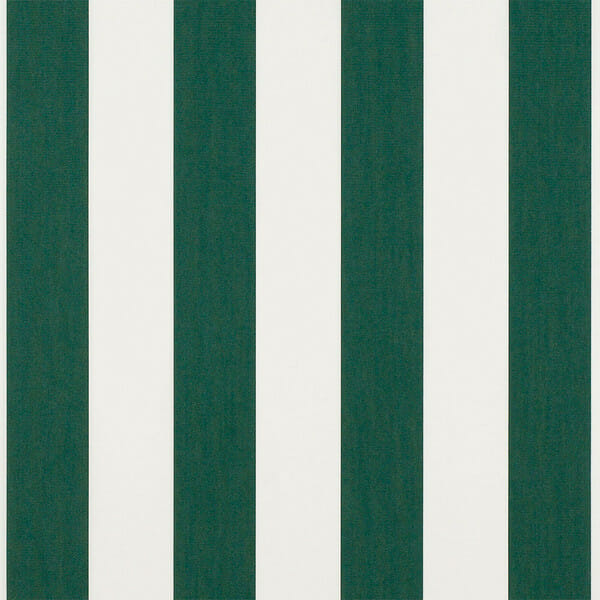
- Convict Stripes or Prison Stripes
Extra-wide, black and white, horizontal stripes. The pattern was originally designed in the mid-18th century, with the idea of making escaped prisoners easily identifiable. Its use waned by the mid-20th century, by which point it was largely replaced by solid-color garments in orange or similar colors.
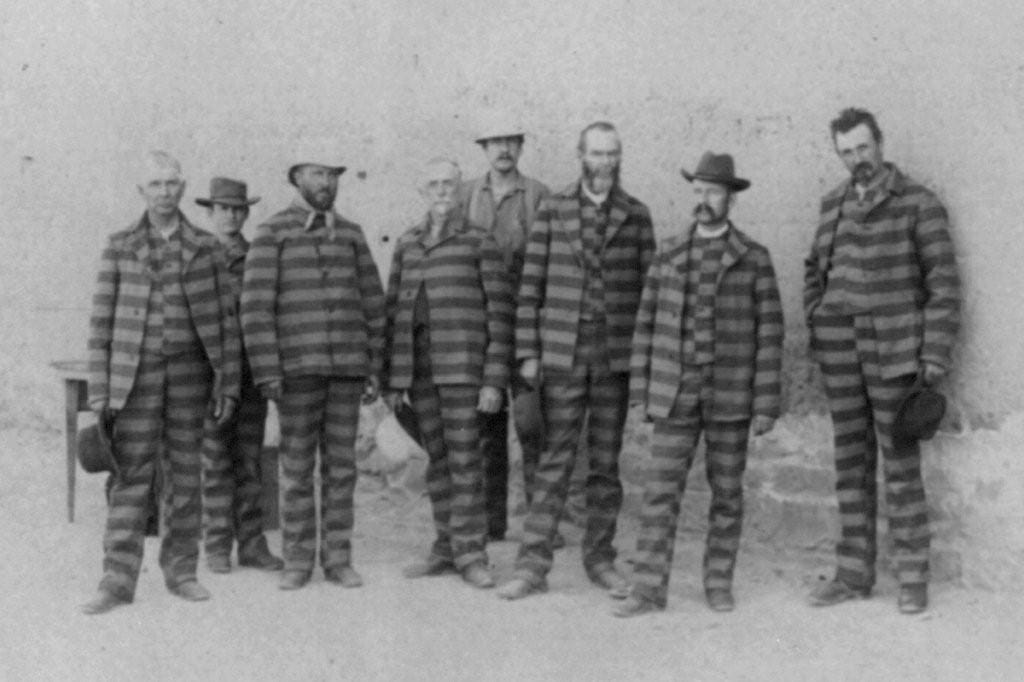
Multicolored and/or Textured Stripes
- Rugby Stripes
Horizontal stripes, similar in width to awning or prison stripes. Typically found on more informal shirts, especially those traditionally worn by rugby players (in which cases team colors would often be displayed). Common in either one color and white, or in two alternating colors. Also found as a pattern on knit ties (still in a horizontal orientation).The two-color versions are sometimes accented with a slimmer white stripe as a sort of outline, thus technically making them unbalanced in such cases.
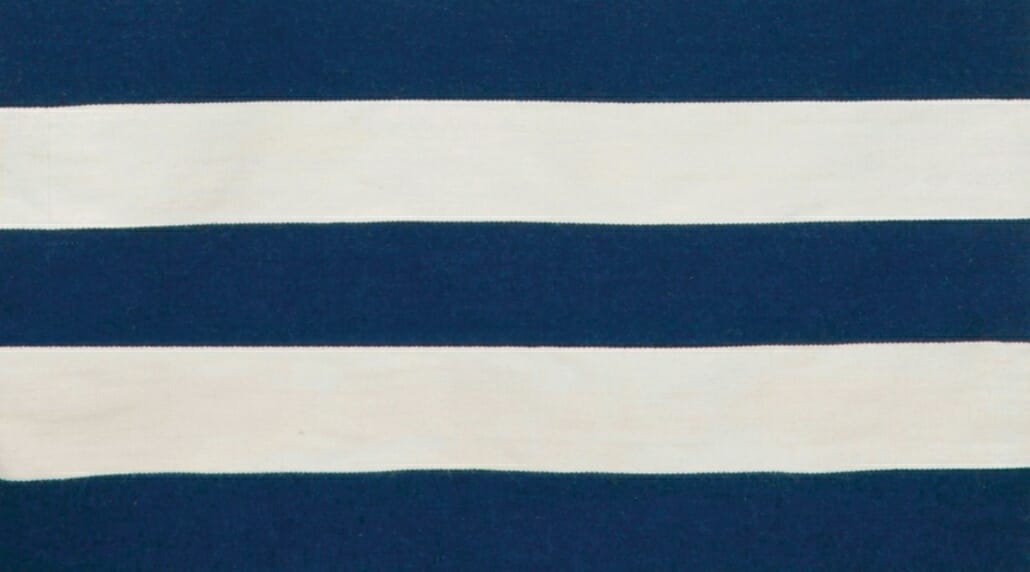
- Track Stripes, Alternating Stripes, or Variegated Stripes
A pattern in which the background color stays the same, but the color of the stripes does not. Frequently used in shirts.Sometimes accented with single threads of another color (e.g. black) as a sort of outline, thus technically making them unbalanced in such cases.
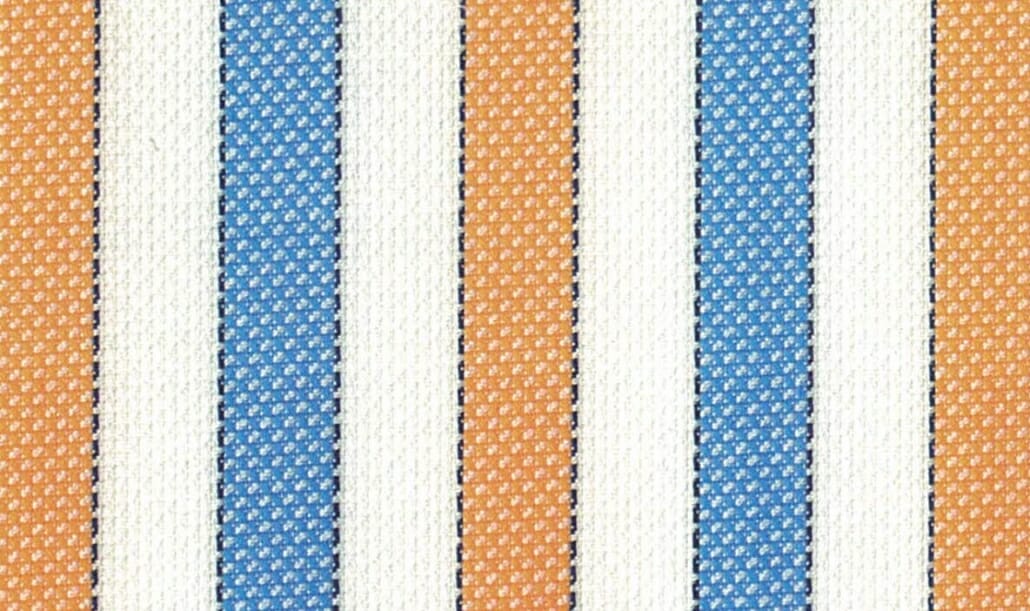
- Seersucker (fabric)
A vertically striped fabric in which some of the stripes pucker, an effect created in the weaving process. In construction, selected warp (vertical) yarns are pulled tight, while others are left loose, creating seersucker’s distinctive texture. Most often made of cotton, it launders easily, needs no ironing, and masks wrinkles, making it ideal for summer garments. Another fabric, plissé, achieves a similar wrinkled texture through a chemical coating.
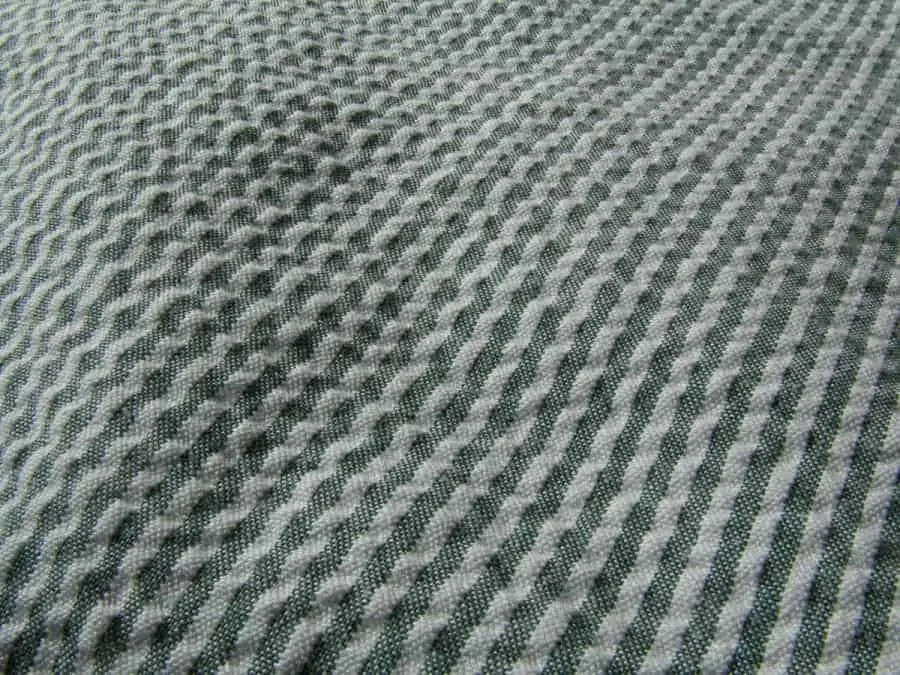
- Hickory Stripe or Railroad Stripe (fabric)
In the late 19th century, a type of heavyweight dark blue seersucker known as “hickory stripe” was used to make the overalls, jackets, and caps of train engineers and railroad workers. This cotton fabric was durable like denim and breathable like standard seersucker. Even today, some railroad companies incorporate this stripe into their uniforms.
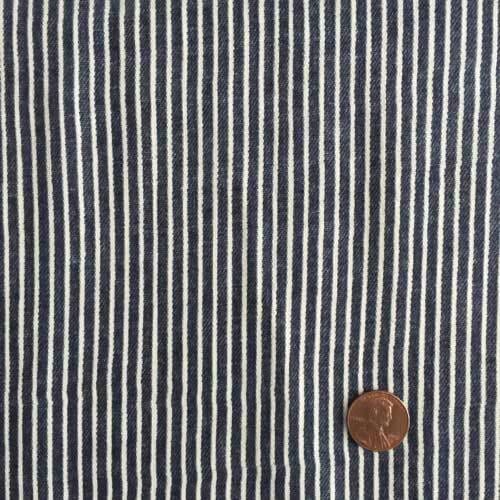
Types of Stripes: Unbalanced
Simple, Two-Tone Stripes (Narrowest to Widest)
- Hairline Stripes
Very narrow stripes (about the width of a hair), made by weaving single threads in color to contrast with the background. They are used mainly in fabrics for men’s shirts, neckwear, and other apparel. The term is principally used to describe shirt fabrics, and less commonly, suit fabrics.
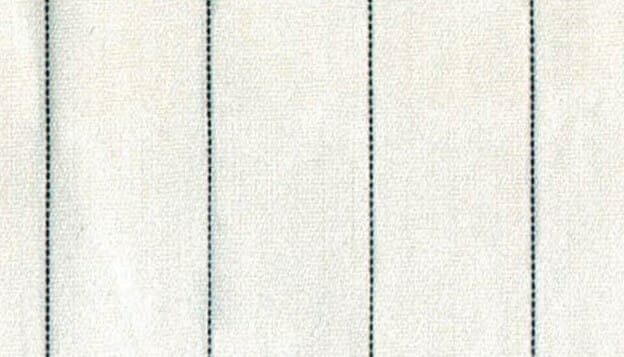
- Pinstripe or Banker’s Stripes
Stripes that are the “width of a pin” (usually less than 1/16″ wide). The term is used to describe both shirt and suit fabrics, where the pattern is used frequently.
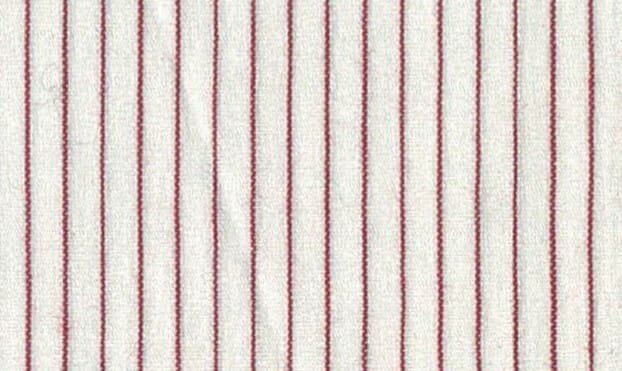
- Pencil Stripes or Dress Stripes
Fine stripes in men’s suit fabric, two or three warps wide, in a color to blend or contrast with the background. The stripes are roughly the width of a carpenter’s pencil mark (about 1/16″ inch). Wider than a pinstripe, but narrower than a chalk stripe. The term usually refers to shirt fabrics, and rarely describes suit fabrics.
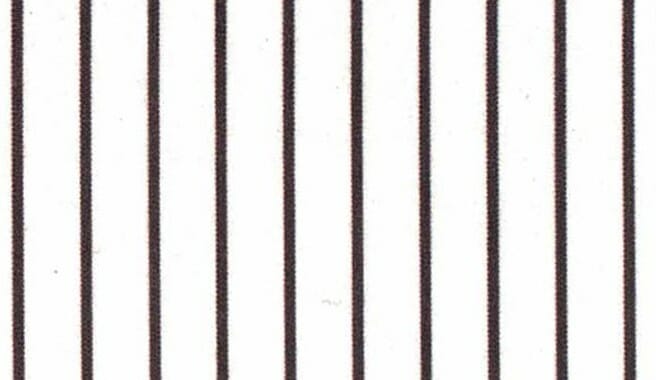
- Chalk Stripes
Stripes in men’s suit fabric resembling tailor’s chalk lines. While previously used to describe a pattern of white or off-white stripes on the dark ground of cloth used for suits, the term is now used to refer to the size and style of the stripe in general. A chalk stripe can now be any color, but it is wider than both a pinstripe and a pencil stripe. The term is never used to describe shirt stripes.
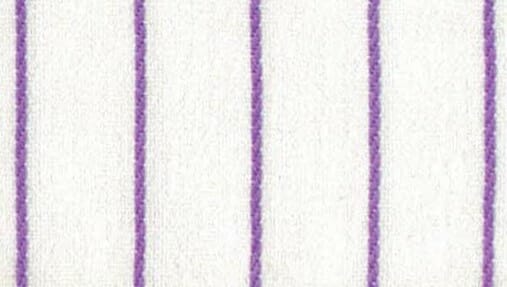
- Rope Stripes
Note that you may sometimes see the term “rope stripe” to refer to a wider chalk stripe that resembles a rope; this definition is too subjective to be considered standard.
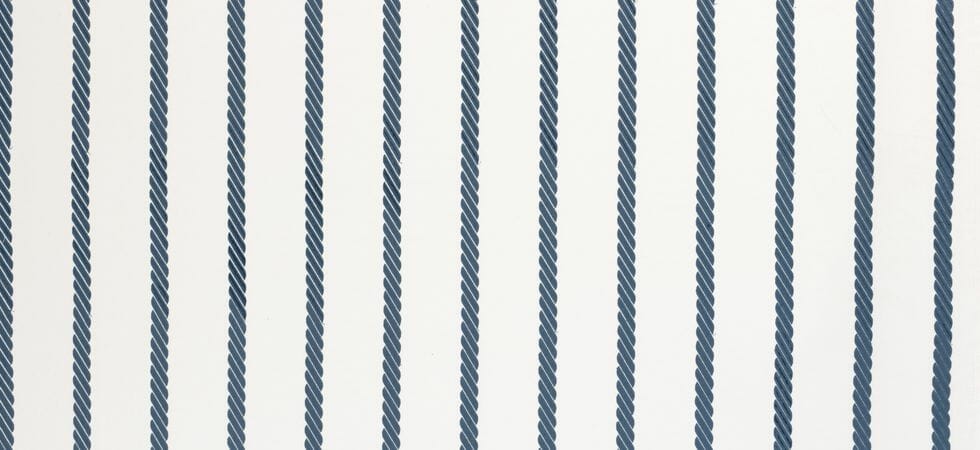
- Double Stripes, Tripe Stripes, etc.
A pattern of multiple pinstripes, pencil stripes, or other narrow stripes in proximity. Usually refers to shirt fabrics.
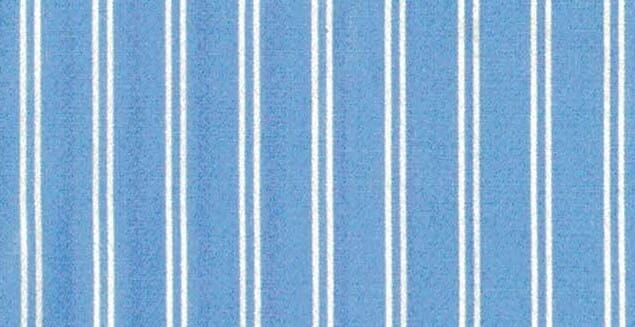
- Multitrack Stripes
A pattern mixing stripes of different “tracks,” or spacing. The term usually refers to shirt fabrics, and is rarely used to describe suit fabrics.
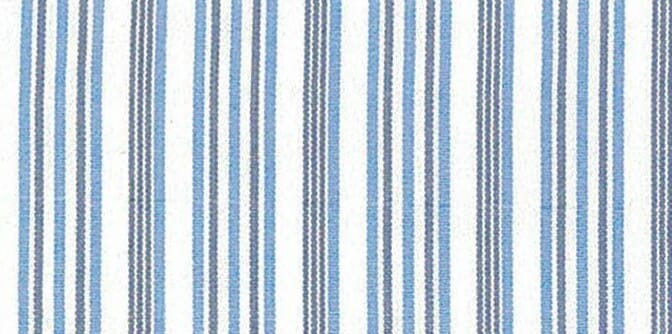
Multicolored Stripes
- Blazer Stripes
Wide, vertical stripes, like those used on older school and team blazers in England. Never used to describe shirt stripes.
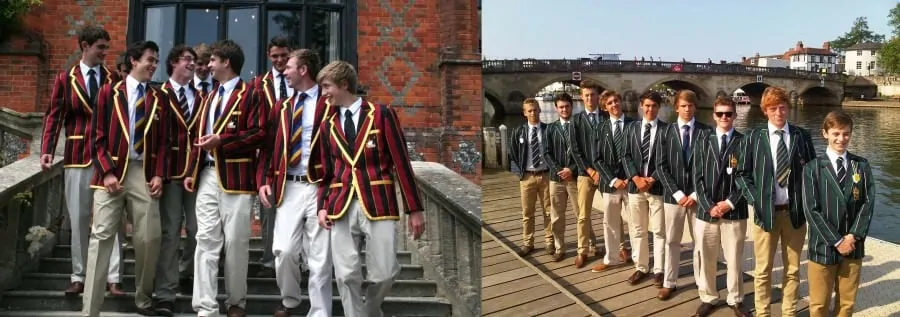
- Shadow Stripes
Vertical stripes, usually narrow, bracketed or “shadowed” by lighter or smaller stripes on one or both sides. A classic shadow stripe features shadows which are variations on the main stripe color, but contemporary offerings feature shadows in different colors. This definition typically applies to shirt fabrics. The same term alternately refers to a self-striped fabric, where the shadows are created by yarns twisting in the opposite direction of the main stripes and are thus only visible in a certain light; this definition typically applies to hosiery and accessories.
- Bar Stripes
A type of shadow stripe where the contrasting smaller stripes symmetrically flank both sides of the main stripe.
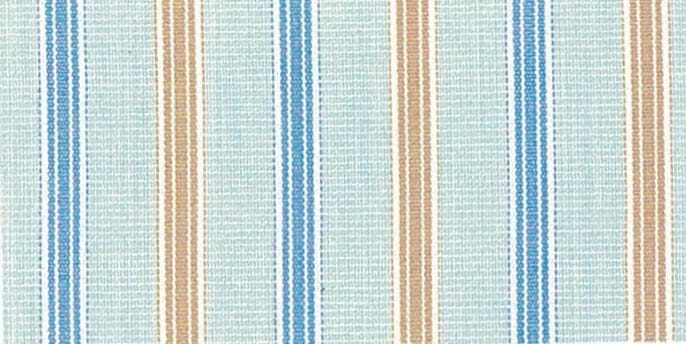
- Halo Stripes
A pattern sometimes used in suit fabrics, which looks as though the center of a stripe is the same color as the background but is surrounded in another color in a “halo” or eclipse effect.
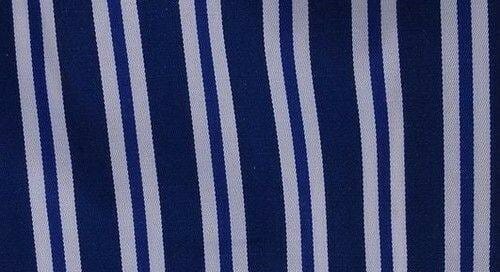
- Regimental Stripes or Battalion Stripes
Stripes in colors identified with various English military regiments and used in ties worn by their officers in civilian dress. The stripes range from 0.33″ to 1.5″ wide. In addition to authentic regimental stripes, similar colors and arrangements are used in neckwear in both England and the United States. The term is most properly used only in conjunction with neckties. Englishmen wear their ties so that the stripe slants from their left shoulder down toward the right; Americans go the opposite direction. The pattern became popular in England following WWI and then spread to America shortly thereafter, especially after Edward VIII visited the US in 1919.
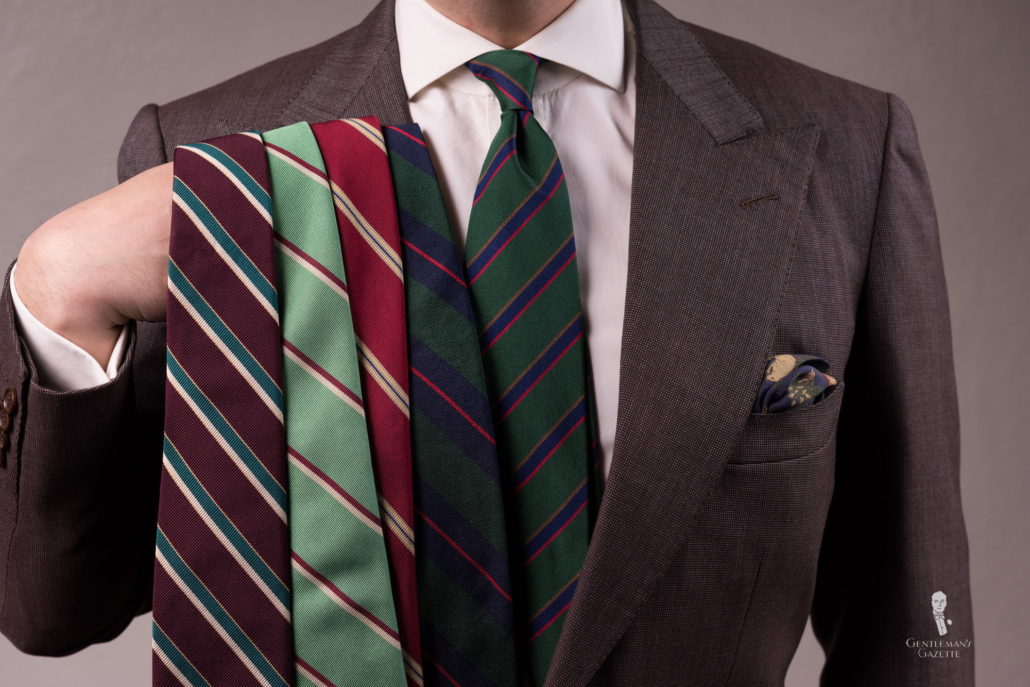
- Collegiate Stripes and Club Stripes
Contrasting stripes of bright and dark color, often in gray-yellow-red or gray-green-blue combinations. The pattern was popular in collegiate shirts in the late 1950s and was also worn to identify country/social clubs.
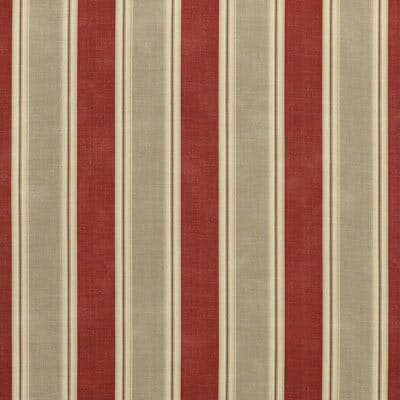
- Grecian Stripes
Figured stripes incorporating a Greek fret or similar design, spaced well apart. Used as a neckwear pattern.
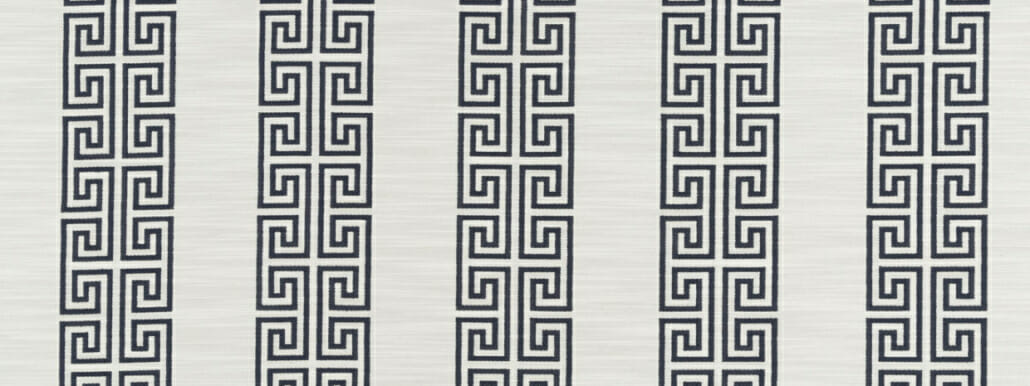
- Roman Stripes or Rainbow Stripes
Bright stripes in groups of contrasting colors, usually running in the warp (lengthwise) direction.
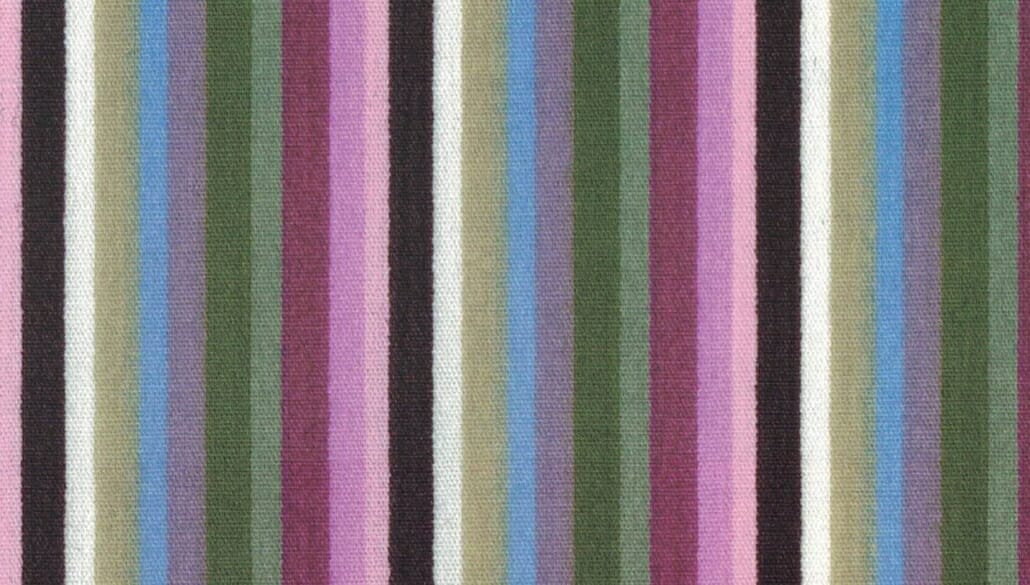
- Ombré Stripes
Stripes incorporating the effect of an ombré (in other words, a shaded gradient), usually within the stripe itself, as opposed to the background.
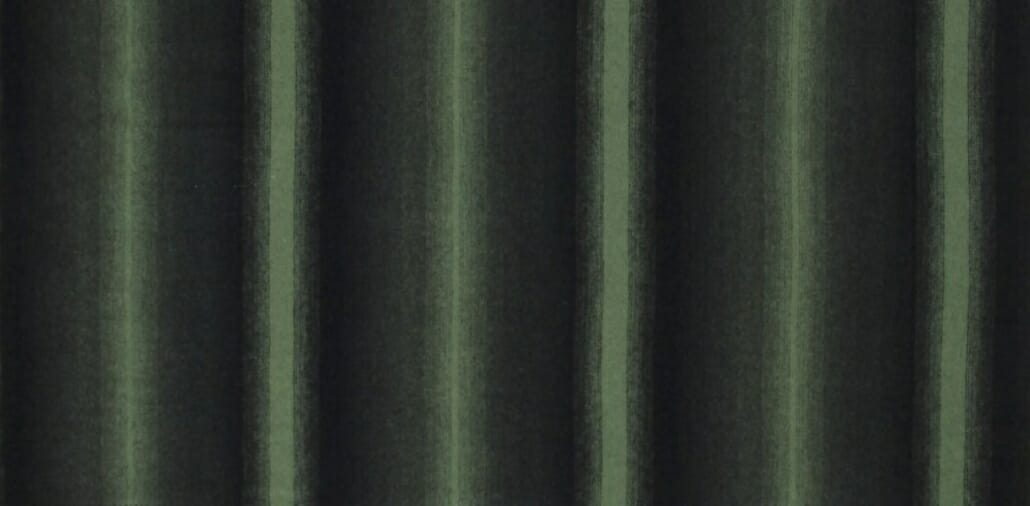
Textured Stripes
- Broken Stripes
A pattern, usually for suit fabric, that appears to be made up of solid, chalk-type stripes from a distance, but upon closer inspection, resembles a series of aligned dashes.
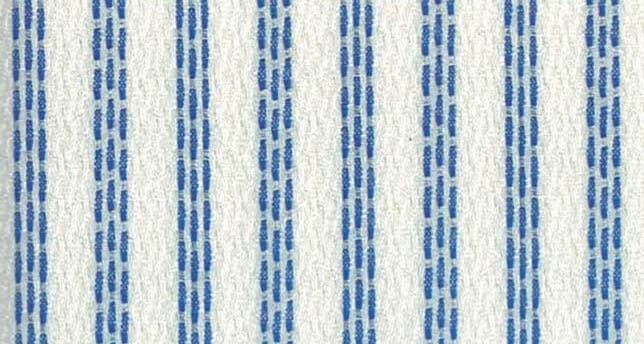
- Beaded Stripes
A subset of broken stripes wherein the stripes resemble dots rather than dashes.
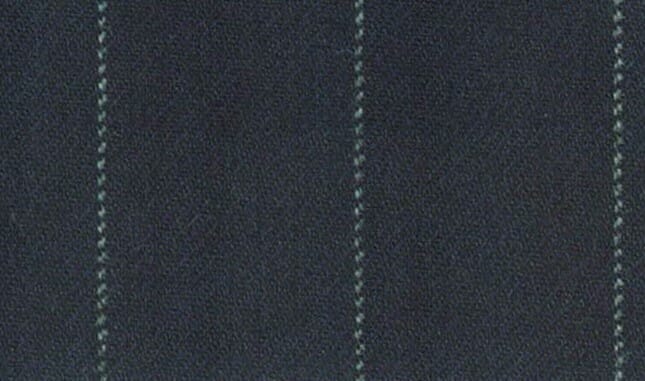
- Satin Stripes
A pattern of alternating shiny and matte stripes created by the fabric’s weave. Popular for dress shirts made of fine cotton, a “satin stripe” may describe any width or color of stripe(s), but usually features a solid color with a contrasting weave.
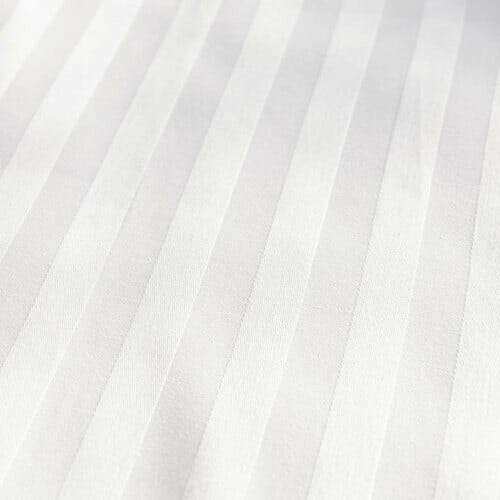
- Morning Stripes, Cashmere Stripes, or Spongebag
While there are numerous variations of striped trousers for formal daywear (or “morning dress”), the signature choice is the “cashmere stripe.” Trousers are sometimes called “spongebags” when featuring this pattern; this is because the pattern has a very close resemblance to traditional spongebags, or dopp kits. Note that tailors call this pattern “cashmere stripe” even though the trousers are not made of cashmere at all!
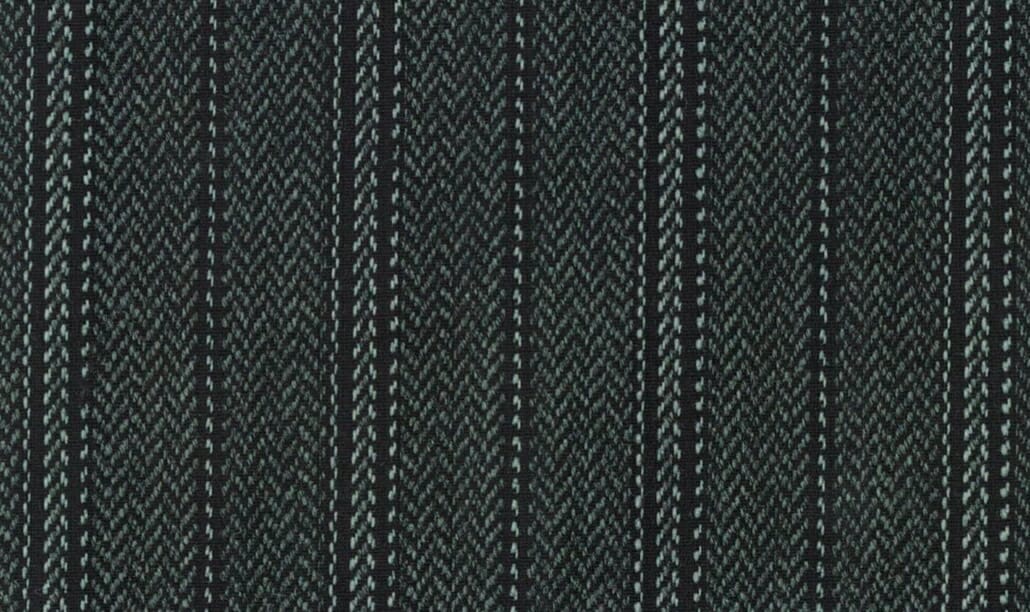
- Ticking Stripes
Any of several simple vertical stripe patterns, usually blue and white or black and white, that resembles mattress ticking. Such patterns are popular for shirt fabrics, as well as denim and canvas.
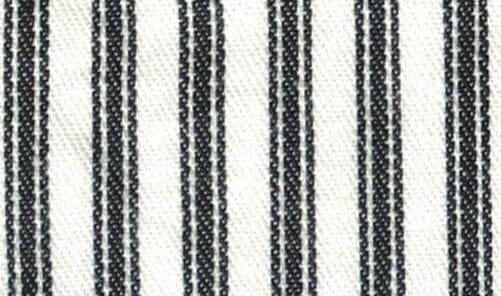
Honorable Mentions
- Madras Stripes
While the fabric known as madras more holistically features a plaid, checked, or otherwise geometric pattern, some garments will feature striped sections as well. In these cases, said stripes (typically wide cabana-style stripes that are light in color and not necessarily balanced) can be referred to as “madras stripes.”
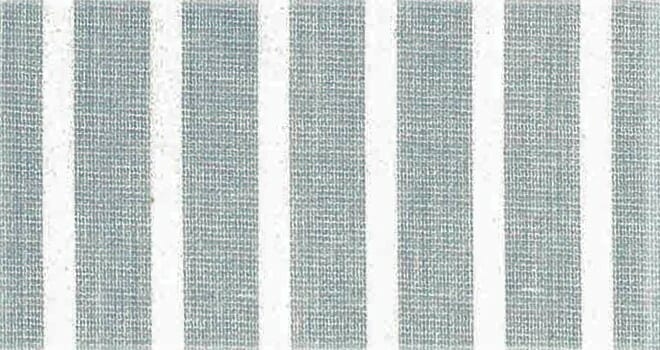
- Wallpaper Print
Style of print that has a vertical emphasis (either a stylized stripe or simply a vertically arranged pattern) and a fanciful or flowery decoration in the manner of old-fashioned wallpaper. Used to describe shirts.
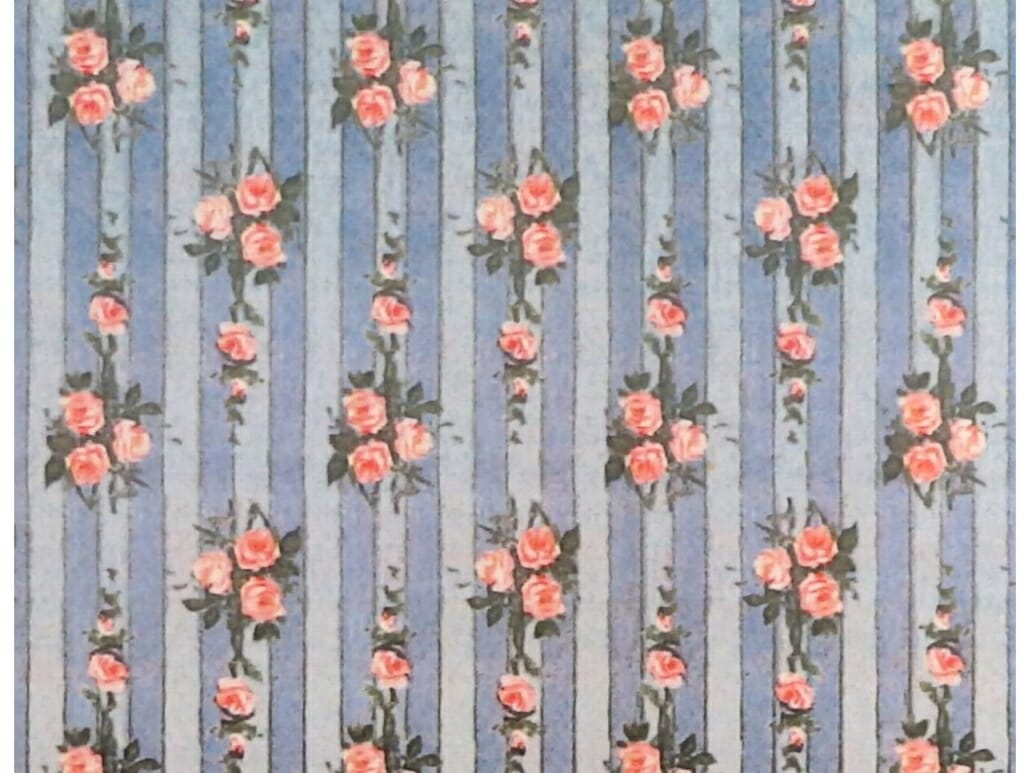
- Mille Stripe (Fabric)
A finely striped fabric that looks like a solid from a short distance, because the fabric is striped almost thread by thread (actually, the stripes are usually formed by groups of two or three threads, and a true thread-by-thread stripe is known as an end-on-end). The term refers to shirt fabrics, never to suit fabrics.
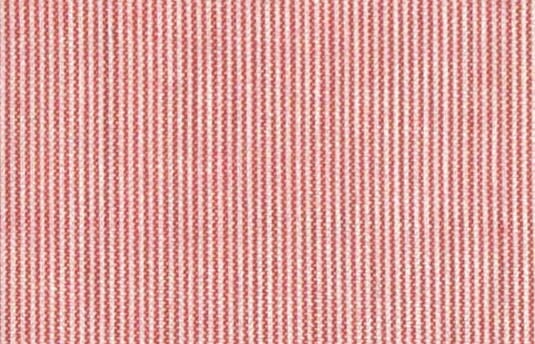
- End-on-end (Fabric)
A type of fabric, most often used for shirts, constructed so that the warp (vertical) yarn alternates color. Typically alternates between blue and white yarns, giving a faintly striped or textured appearance to the final fabric.
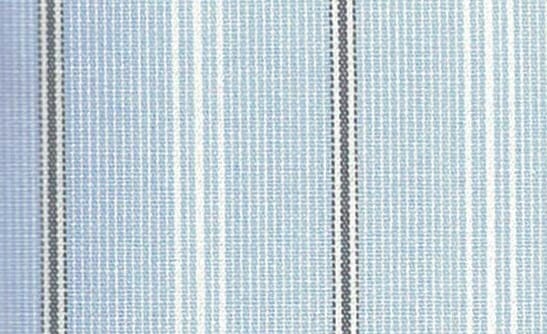
How Do You Wear Stripes?
In the world of tailored clothing, stripes can be worn in many ways, but the choice depends on your personality and how much you like loud, bold patterns in your wardrobe.
Shirts
Striped shirts are usually a safe choice. If you want something restrained that pairs easily with a tie, a standard two-tone stripe, such as a Bengal stripe, is a good option. Even safer would be a pencil stripe or hairline stripe, in that these stripes of a very small scale can read as solids from a distance. Moving toward smart casual or business casual, try a candy stripe with a more muted, solid tie. For totally casual, tieless looks, choose candy stripes or Regency stripes in warm weather and multitrack stripes for winter.

On the other hand, if you want to forget about playing it safe, go for a striped shirt with a striped jacket. It’s important to remember in this case that the sizes of the stripes on each garment should differ greatly (for example, a pencil-striped shirt with a sandwich-striped jacket). If the “density” of the patterns is too similar, they will not appear harmonious to the eye. Similarly, consider how prominent the pattern of your shirt is when choosing a tie. Solid color ties are a safe choice, but you could also try a tie that has a stripe of a different scale (regimental stripes, for example), or features a different type of pattern altogether.
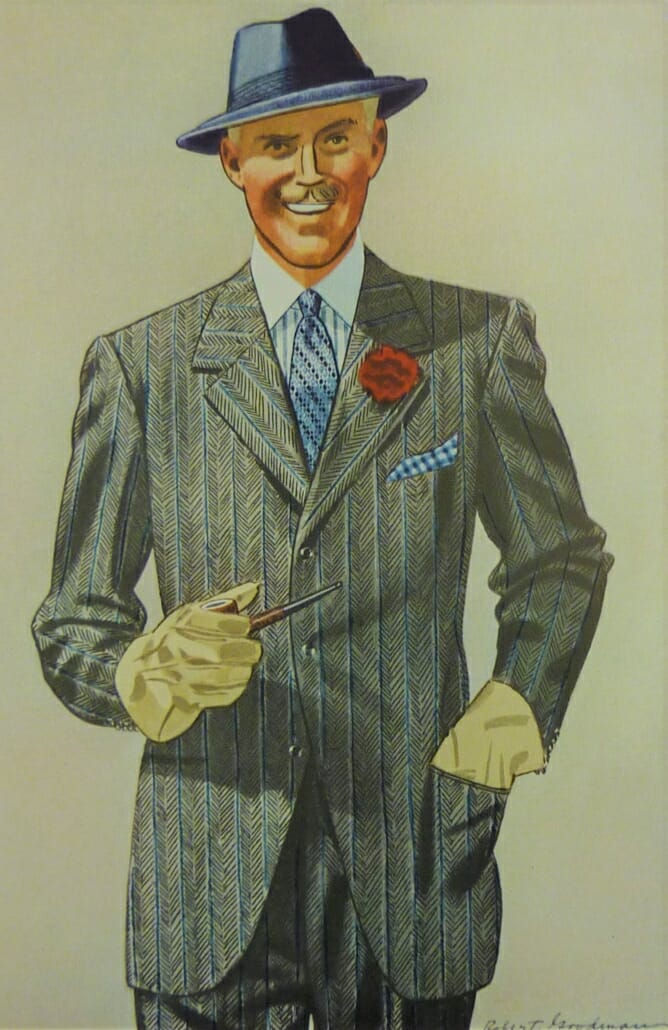
Jackets
Stripes on a jacket can sometimes be a bold statement, though not always; generally, the broader the stripe, the bolder the effect. For example, if a jacket features brightly colored sandwich, awning, or blazer stripes, it will come across much more aggressively than one made up of muted pinstripes. Keep this in mind when choosing a jacket, and remember: try on a few options to compare their effects on your frame. For instance, a fine white pinstripe on a navy suit jacket remains conservative, but a cabana-striped summer sports coat or one with Roman stripes would be quite loud. If there are bright colors or many colors, the jacket obviously becomes bolder. A navy hairline stripe on a grey jacket is easy to wear, but a pencil stripe would require more careful consideration.
Whatever you choose, one thing you will notice with a striped jacket is how it creates the impression of a longer torso. Tailored menswear has always sought to flatter the male form through added visual suggestion; vertical lines over the chest draw the gaze upward. As a general practice, pair your patterned jacket (if it is not part of a suit) with solid trousers, to avoid clashing patterns. Regarding your choice of tie, you can follow two options of layering and either wear a solid tie or go pattern-on-pattern, which requires more skill.
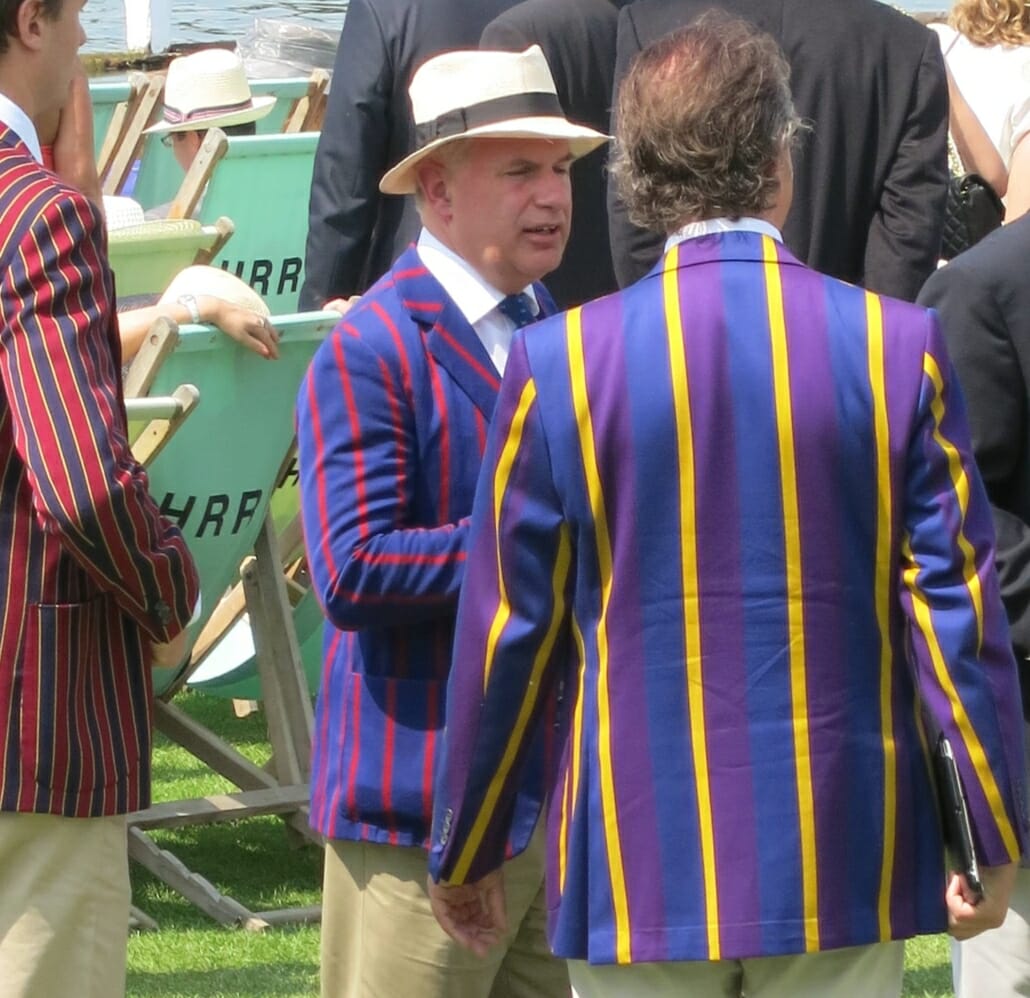
Suits
Stripes are not as inherently bold as checks, and can be worn with slightly greater latitude in suits (as evidenced by the rich history of pinstripes and chalk stripes in white-collar professions). Therefore, their acceptability depends on the dress code of your office and how much you want to be noticed. Suits with broader chalk stripes (or “rope stripes”) are more risky, as the loud pattern can easily make your outfit look more like a costume. Italian style tends to be bolder in making use of striped suits, especially ones with regularly spaced patterns, but they are still difficult to carry off.
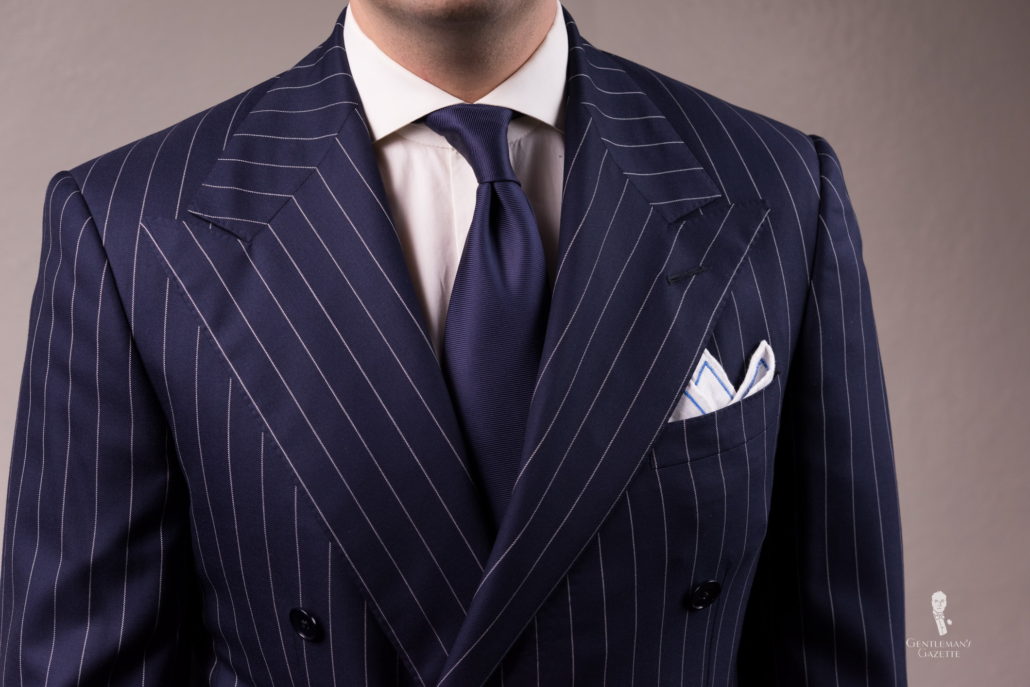
Overcoats
It is said that things you can’t get away with in a jacket, like large peak lapels and aggressive textures, are acceptable with an overcoat. The same goes for stripes. Even so, however, bold, wide stripes on an overcoat should be avoided, as when combined with a long, buttoned overcoat, you will appear to onlookers as one giant mass of large stripes. Instead, opt for a more reserved stripe, similar to one found on a well-made suit. Though always a statement, a subtly striped overcoat, worn with an otherwise reserved outfit, is likely to garner more style compliments than other garments that would be considered loud.
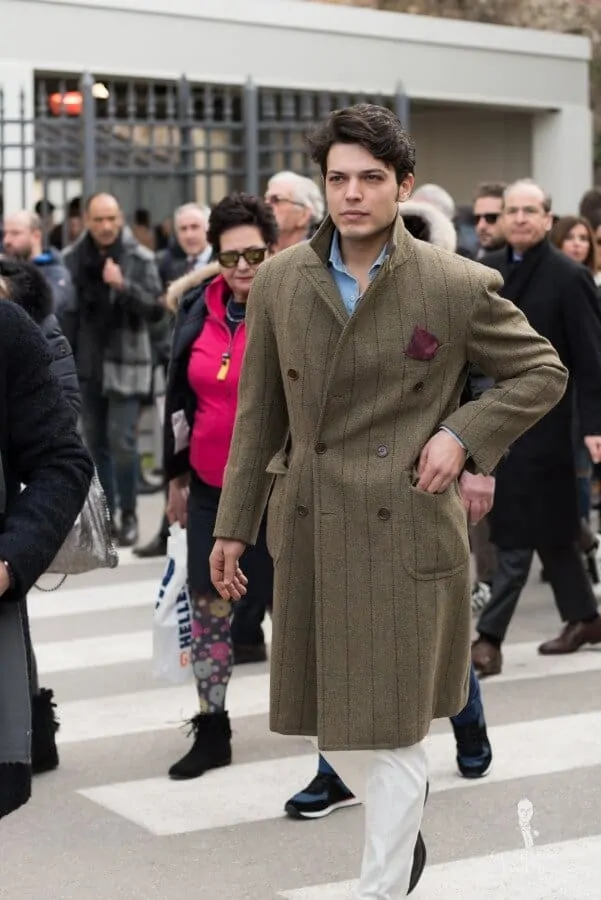
Pants
As mentioned above, striped pants worn with a plain jacket (either a cutaway coat or lounge coat) are a staple of proper morning dress. Outside of formal daywear, however, striped pants are somewhat less common as a standalone garment than their checked (or differently patterned) brethren. As such, those pairs that do exist often feature wider patterns in bright colors, and would best be characterized in such cases as a type of “go-to-hell pants” and worn in the same way, as a statement.
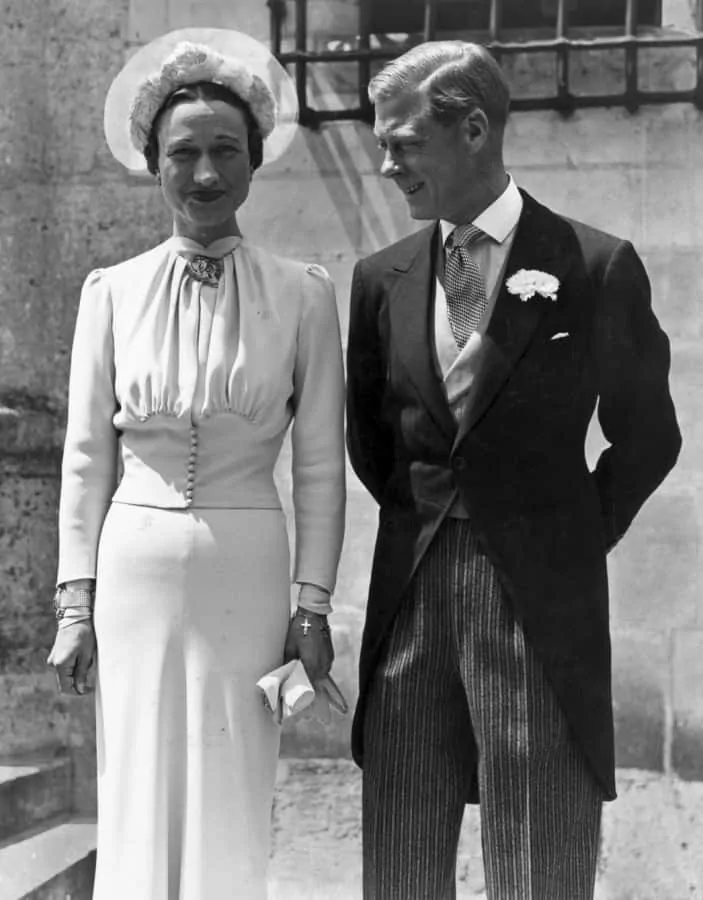
Waistcoats
A great option for wearing stripes in tailoring is a waistcoat. The waistcoat has traditionally been a means of introducing bold color or pattern, adding personality and a sense of fun under a more conservative suit. Whereas bold pants are an in-your-face defiance of convention, bold waistcoats are almost expected, and you can match a color in the pattern with that of your jacket.
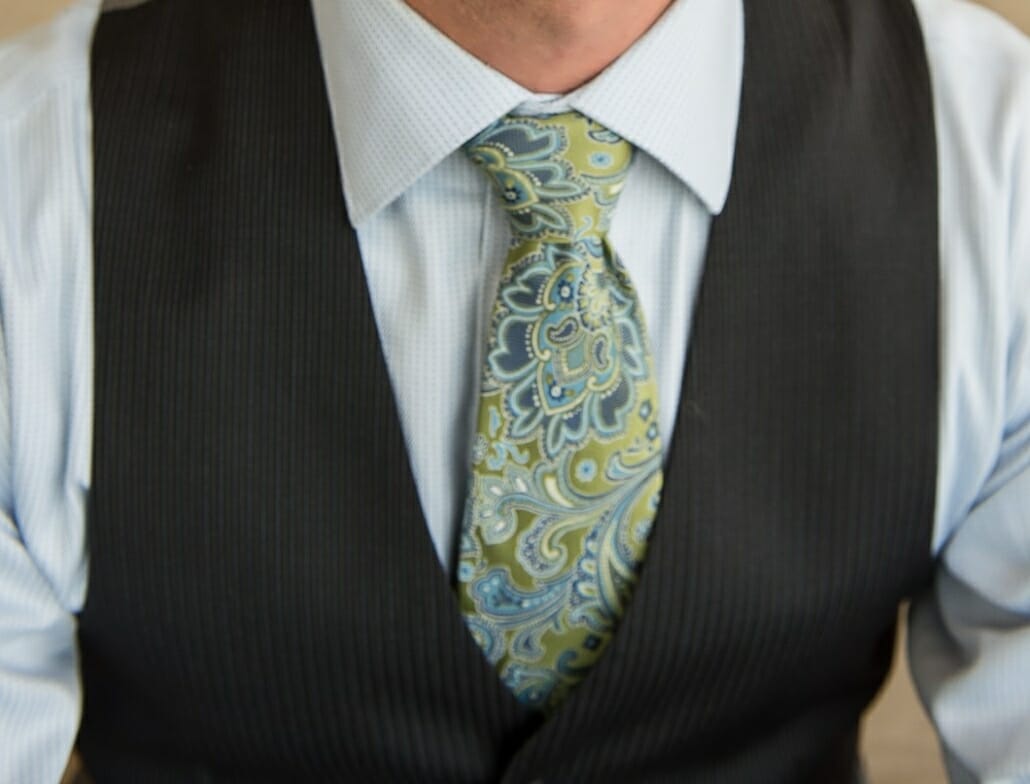
Accessories
As is usually the case with any bold colors or patterns, accessories are a good place to start with stripes because they represent a relatively small dose of the pattern, and can integrate a bit of interest without becoming visually overwhelming. The most commonly represented stripes on neckties are hairline stripes, colored shadow stripes, and regimental stripes (all most often at a diagonal, though the first two of these can sometimes be vertical or horizontal). Multitrack stripes can be a good choice for casual ties, and wooly winter ties gain subtle interest from a fabric-style shadow stripe.
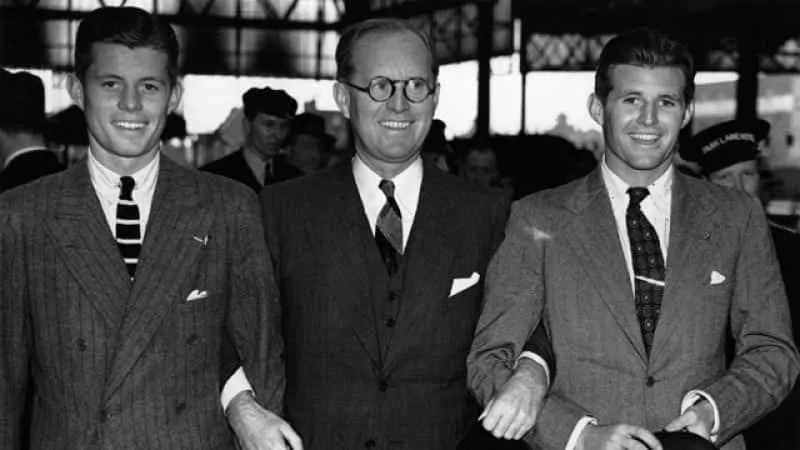
In drab winter weather, a striped scarf can be a terrific option as well, lending interest and excitement when colors are more muted. Meanwhile, in summer, outfitting a straw hat with a striped band can up your sporty sprezzatura.
Conclusion
Hopefully, this article has cleared up the distinctions among the various forms of striped fabrics available in menswear. With this information and a bit of practice, you should be able to name a stripe style on sight and even identify hybrid combinations that blend the features of more than one kind of stripe (for example, an alternating end-on-end pattern). Stripes are a versatile pattern style that can either tend toward the casual and evoke a sporting heritage, or be right at home in more formal settings–featured in the wardrobes of everyone from resort-goers to bankers. This wide range of possibilities speaks well to the versatility of stripes in your wardrobe, as they are amenable to being dressed up or down. Overall, one thing’s for sure–if you do your homework, it’s not hard to earn your stripes.
How do you like to wear striped patterns? Tell us in the Comments section.
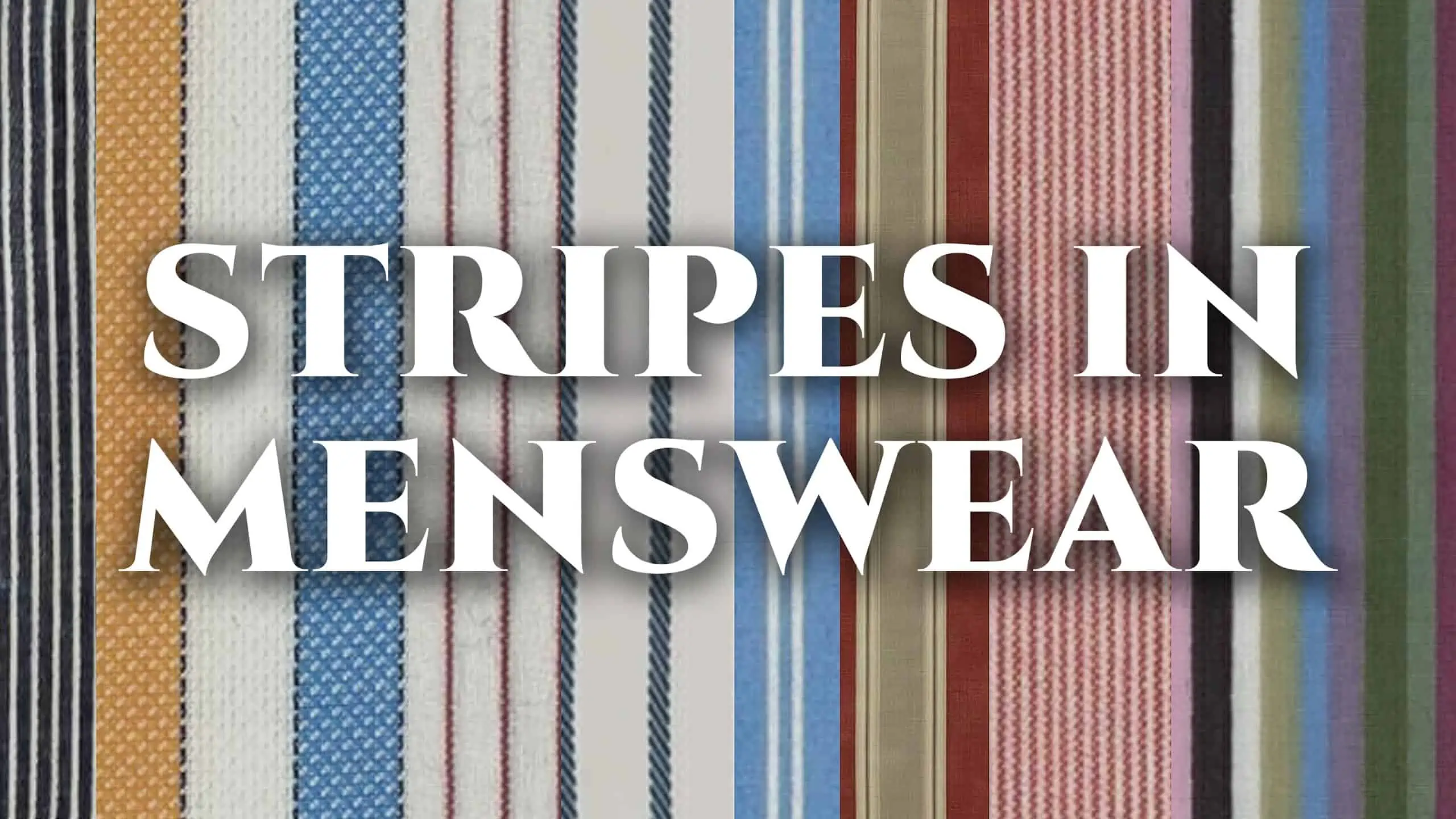
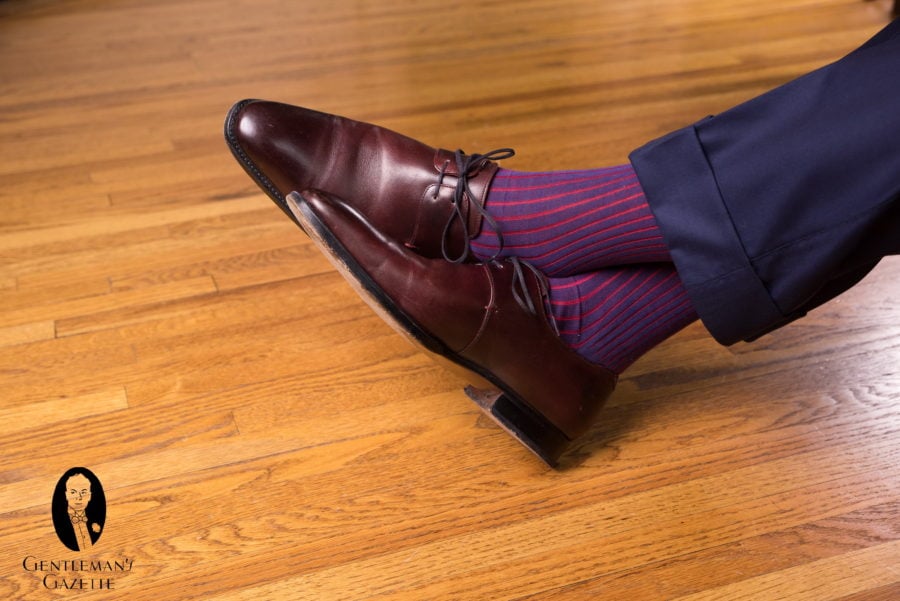
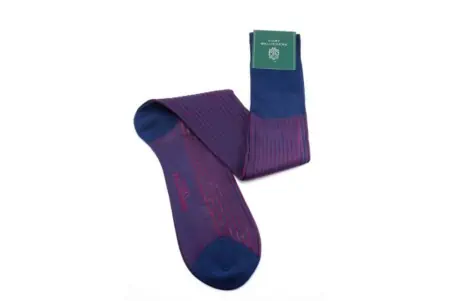
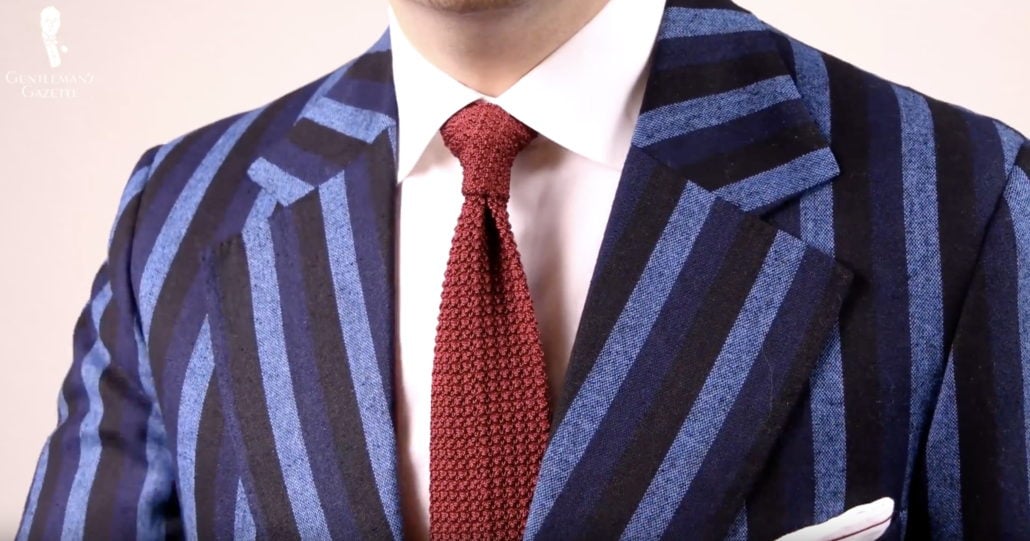
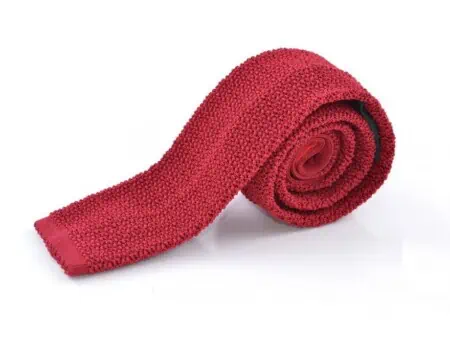
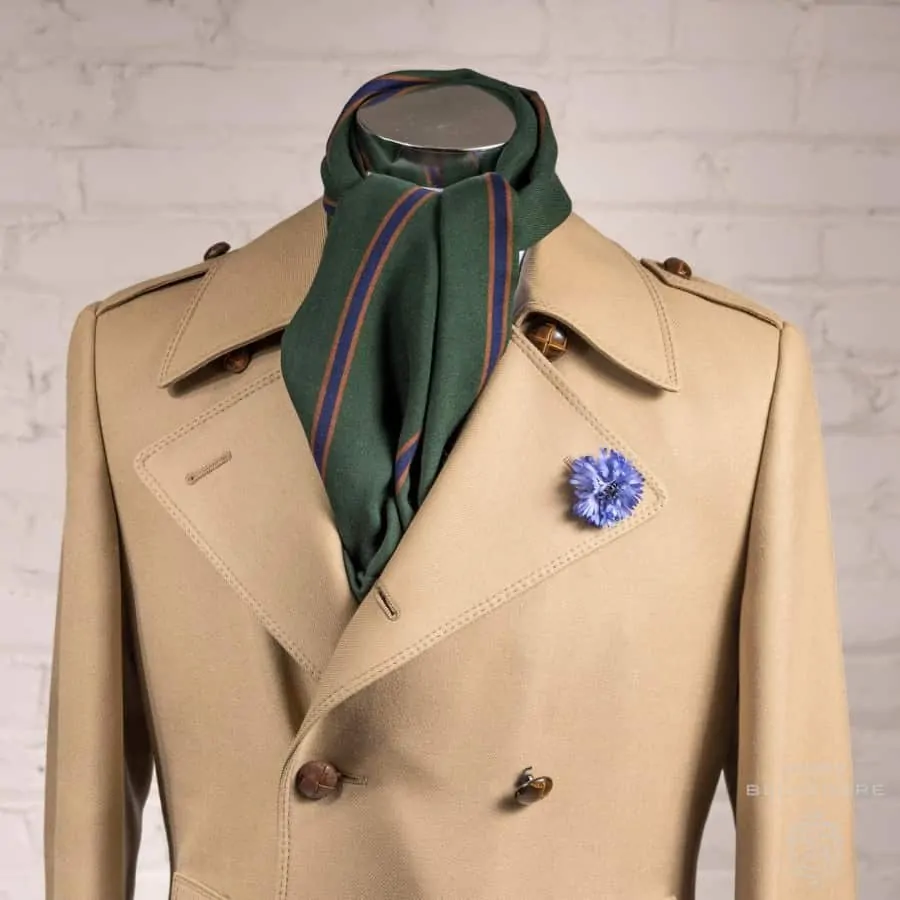
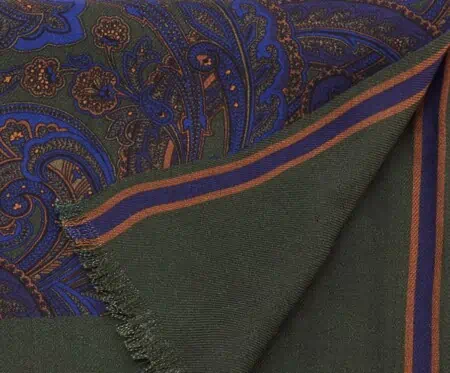
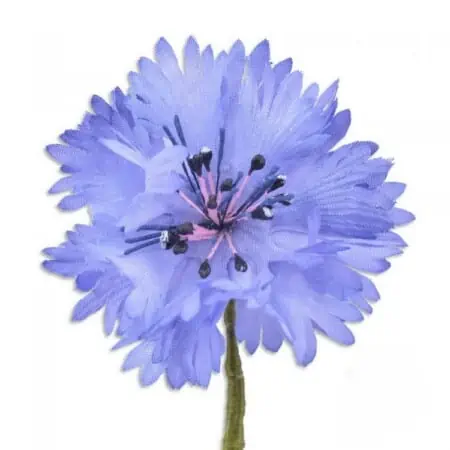
So much detail about stripes… who knew?
No kidding… I’m striped out!
Excellent article! Thank you.
You are welcome! :)
Terrific article! Good job indeed, thanks!
I like stripes mostly on my shirts… bengal or candy (now I know…lol). On my suits, only the formal pinstripes one… I am a lawyer, so… And I’ve always liked seersucker, which would indeed be appropriate for the Spanish summer, but never dared to try one… Oh, and ties, of course, I like regimental style ones!
Thank you for sharing!
Wonderful article. Thank you!
Different combinations are good for gentlemanly appearance.
Really comprehensive and wonderful article. Thank you so much!
We appreciate your kind words. :)
How do you feel about striped or patterned pants with an odd jacket with little or no pattern?
My favorite suits have long been navy pinstripes. Hard to beat, in my opinion.
Thank’s sir fot this rich article.I couldn’t guess such a large range of stripes does exist. Personnaly, i Always wear patterned suits, with check or stripes, but the stripes are definitely my favorite pattern.even my shirt are all made in small bengal stripes fabrics of différents colors, with a white collars and cuffs. As ou may guess, this article was like made for me, and i really enjoyed reading it. Again Thanks a lot.Merci
You are welcome and thanks for sharing, Houmbosso!
Your wealth of knowledge and sense of style is refreshing to see in this modern world of T-shirts, sloppy pants and flip flops. Grace and style seem to have fallen into disfavor for a certain segment of our society. It is fascinating to see that when I go out into the public or to events or meetings how much more respect I am shown and interest in my points of view on subjects versus let well dressed. If I may make a suggestion to your wide range of followers there is a magazine called “THE RAKE” (I am sure you are familiar with it) that your audience would enjoy.
I find my taste for certain clothing changing as i gracefully season.
There is a gaffe in the video around 4:50. Bengal is not, as Preston says, “now Calcutta.” Bengal is still Bengal, and it is a region of South Asia, not a city. The city formerly called Calcutta is now more commonly called Kolkata.
Very informative article! Especially for Russia, where there is very little such information.
As a lawyer, you should always look good, and this helps such articles.
Thank you!
こんにちは。
パワハラ指切断でおなじみのド屑県香川のド屑企業フジフーヅでございます。
裁判も会社ぐるみで偽証をして無事乗り切ったド屑でございます。
餃子シュウマイなどをスーパーで販売しております。
店頭で見かけましたらそのときはご購入のほどどうかよろしくお願い致します。